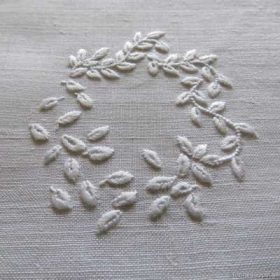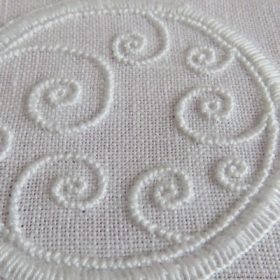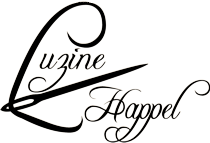December is approaching – time to think about ornaments for trimming the tree. This year a bell will be added to the collection of Christmas ornaments.
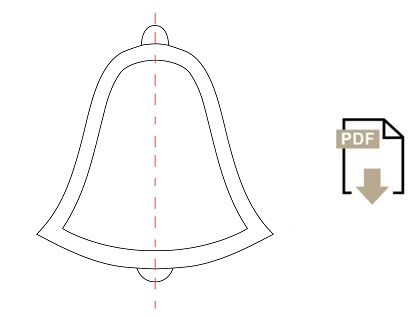 A bell design with a double outline is transferred to 13.5/cm thread count linen. The original size is 7 cm X 9 cm.
A bell design with a double outline is transferred to 13.5/cm thread count linen. The original size is 7 cm X 9 cm.
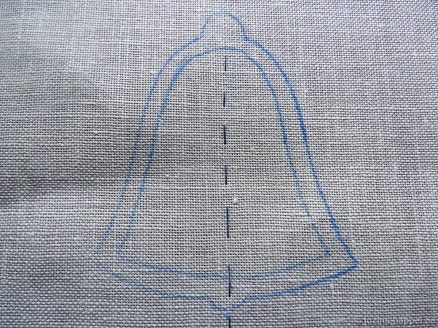 Using coton à broder No. 16, Coral Knot stitches are worked along the inner line. Using coton à broder No. 20 for Blanket stitches and the outside Chain stitches, Chain stitches are first worked a small distance outside the Coral Knot stitches.
Using coton à broder No. 16, Coral Knot stitches are worked along the inner line. Using coton à broder No. 20 for Blanket stitches and the outside Chain stitches, Chain stitches are first worked a small distance outside the Coral Knot stitches.
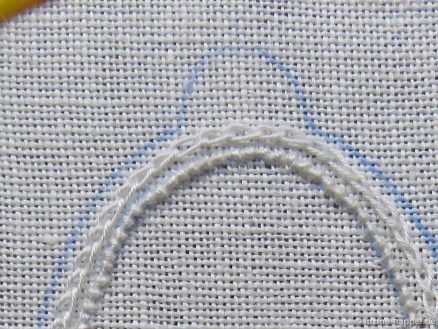 Then the outside Chain stitches are covered with densely worked Blanket stitches between the outline and the Coral Knot line. A half-eyelet scallop at the top creates a perfect hole to fasten a hook or hanging string.
Then the outside Chain stitches are covered with densely worked Blanket stitches between the outline and the Coral Knot line. A half-eyelet scallop at the top creates a perfect hole to fasten a hook or hanging string.
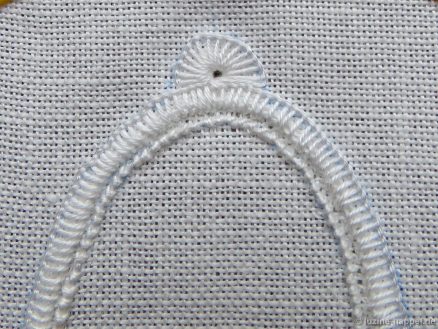 Using coton à broder No. 30, Chain stitches are worked directly inside the Coral Knot stitches. The shape is filled with pattern “478.” Thread withdrawing and instructions for working this a simple drawn thread filling pattern can be found here.
Using coton à broder No. 30, Chain stitches are worked directly inside the Coral Knot stitches. The shape is filled with pattern “478.” Thread withdrawing and instructions for working this a simple drawn thread filling pattern can be found here.
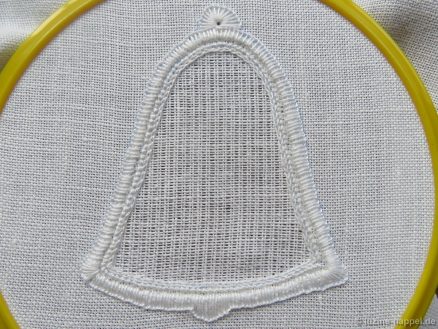 After washing, starching, and ironing, the piece is cut.
After washing, starching, and ironing, the piece is cut.
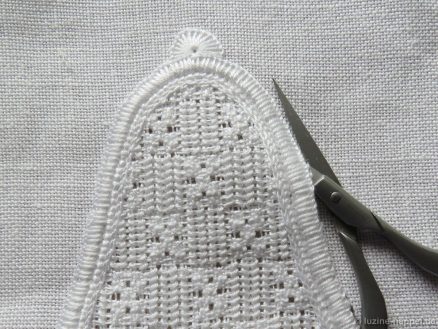 It is now ready to decorate your tree.
It is now ready to decorate your tree.
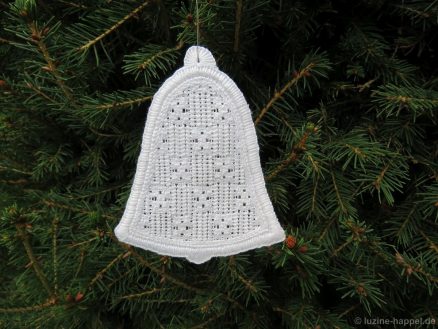
Autumn leaves drift from trees and bushes.
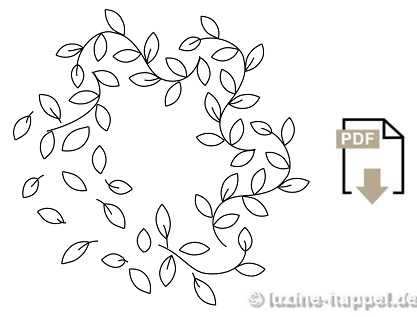 My narrow autumn wreath also gets into a muddle.
My narrow autumn wreath also gets into a muddle.
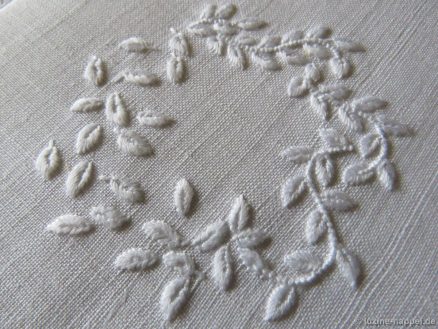 The once orderly wreathed sprigs
The once orderly wreathed sprigs
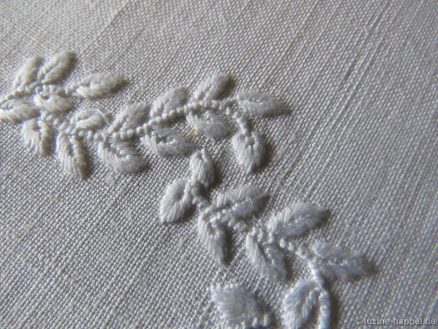 lose their leaves, and these flutter away.
lose their leaves, and these flutter away.
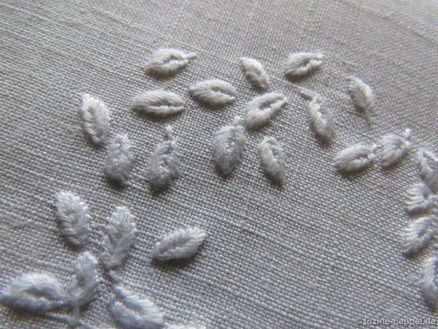 This seasonal exercise, designed by the artist Gudrun Hartwig, is perfect for practicing small pointed leaves.
This seasonal exercise, designed by the artist Gudrun Hartwig, is perfect for practicing small pointed leaves.
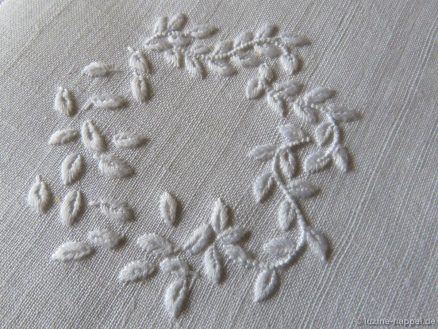
The last design for continuing the band with circle designs is a little bit edgy. But it is an interesting design and looks pretty embroidered.
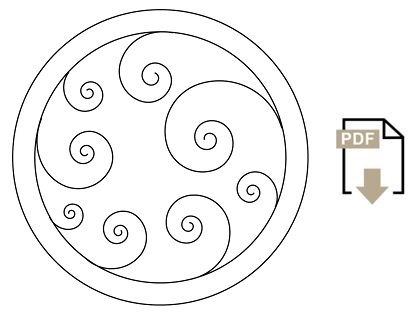 The design is transferred to the linen. Using coton à broder No. 16 Coral Knot stitches are worked along the inner line. The tendrils run clockwise, so also embroider the Coral Knot stitches clockwise. (If you do not transfer the design by ironing, your tendrils will run counterclockwise. In this case please embroider also the Coral Knot stitches counterclockwise.)
The design is transferred to the linen. Using coton à broder No. 16 Coral Knot stitches are worked along the inner line. The tendrils run clockwise, so also embroider the Coral Knot stitches clockwise. (If you do not transfer the design by ironing, your tendrils will run counterclockwise. In this case please embroider also the Coral Knot stitches counterclockwise.)
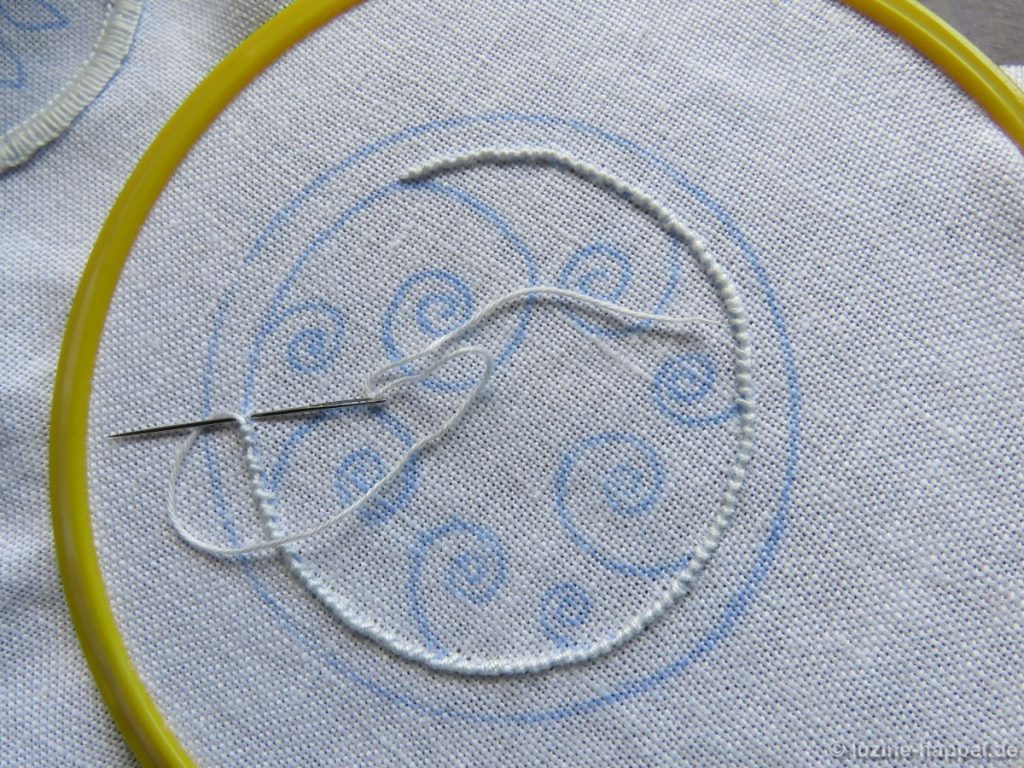 Please make sure, that the last stitch before reaching a fork is worked somewhat wider than the others. You want to work an offshoot on the
Please make sure, that the last stitch before reaching a fork is worked somewhat wider than the others. You want to work an offshoot on the
right, so widen the stitch a small step to the right.
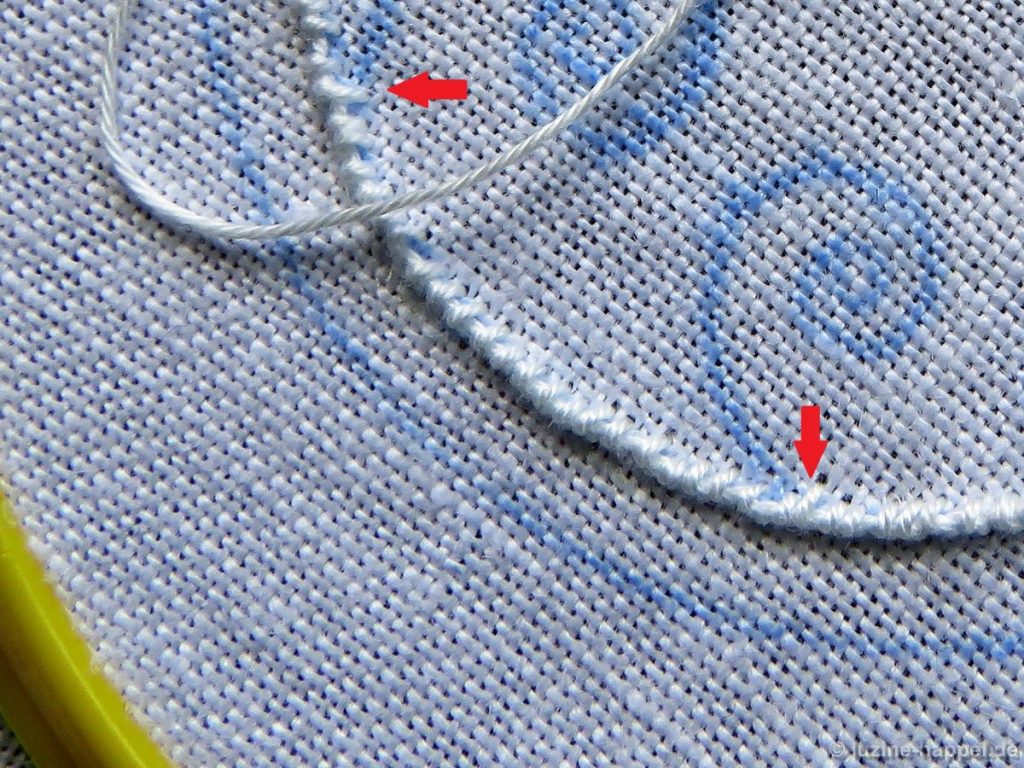 All other preparatory work is done per the explanations in the leaves practicing article.
All other preparatory work is done per the explanations in the leaves practicing article.
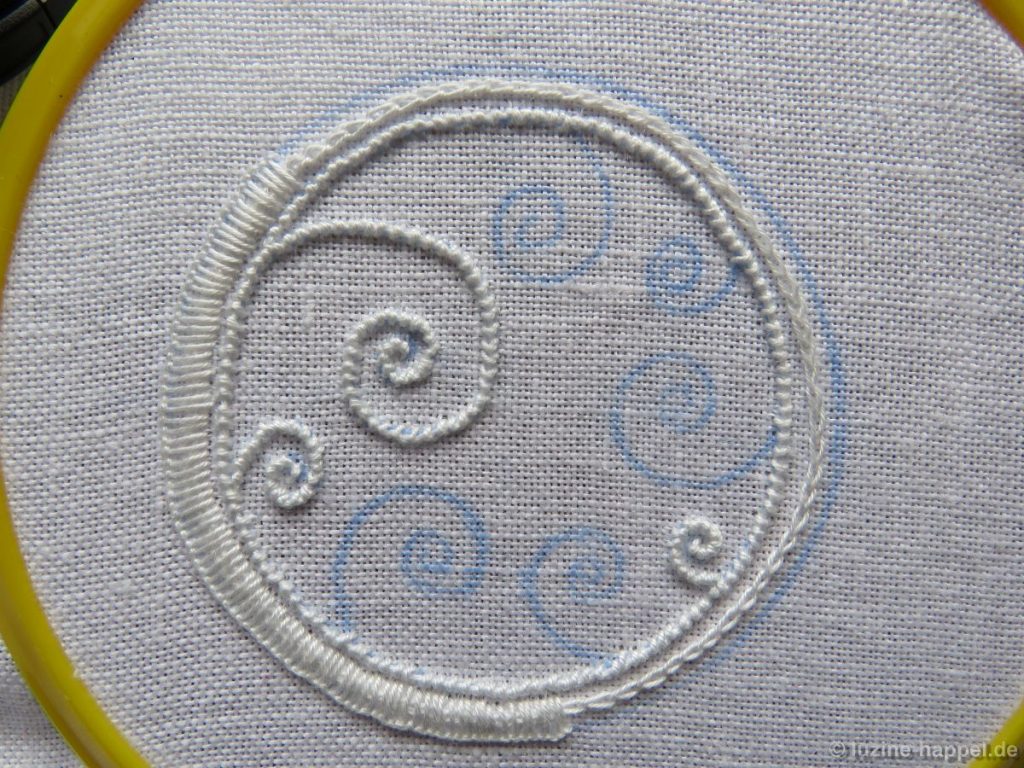 Then the tendrils are worked.
Then the tendrils are worked.
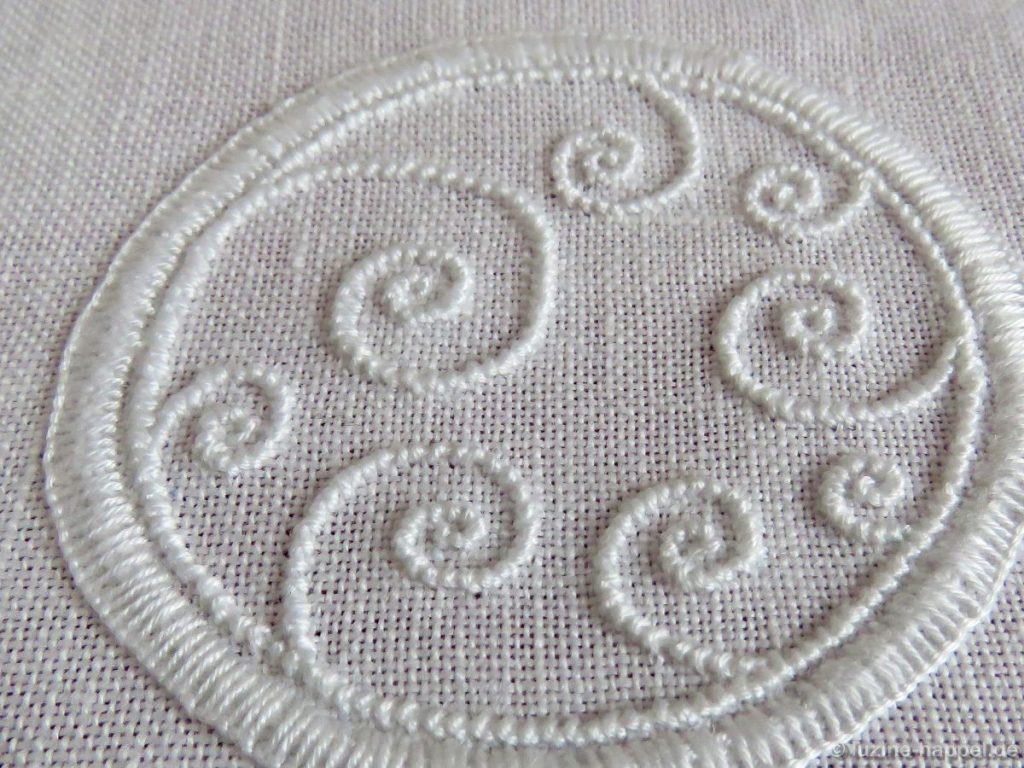 The forks turned out perfectly.
The forks turned out perfectly.
Today I present two more designs for the band with circle designs. Both are suitable for practicing blanket stitch eyelets in combination with small pointed leaves.
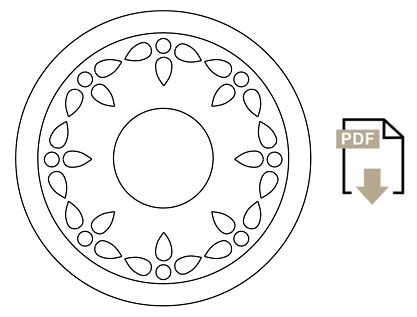 The designs are transferred to the linen, and the preparatory work is done per the explanations in the leaves practicing article.
The designs are transferred to the linen, and the preparatory work is done per the explanations in the leaves practicing article.
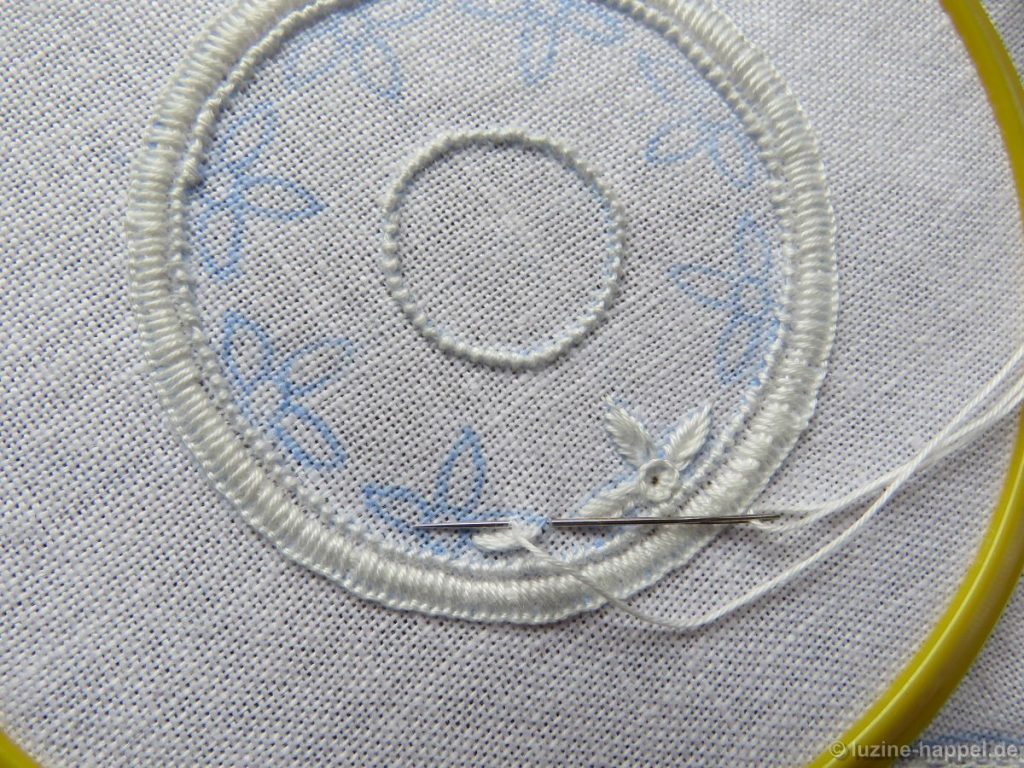 Using coton à broder No. 20, the leaves of a group are worked first,
Using coton à broder No. 20, the leaves of a group are worked first,
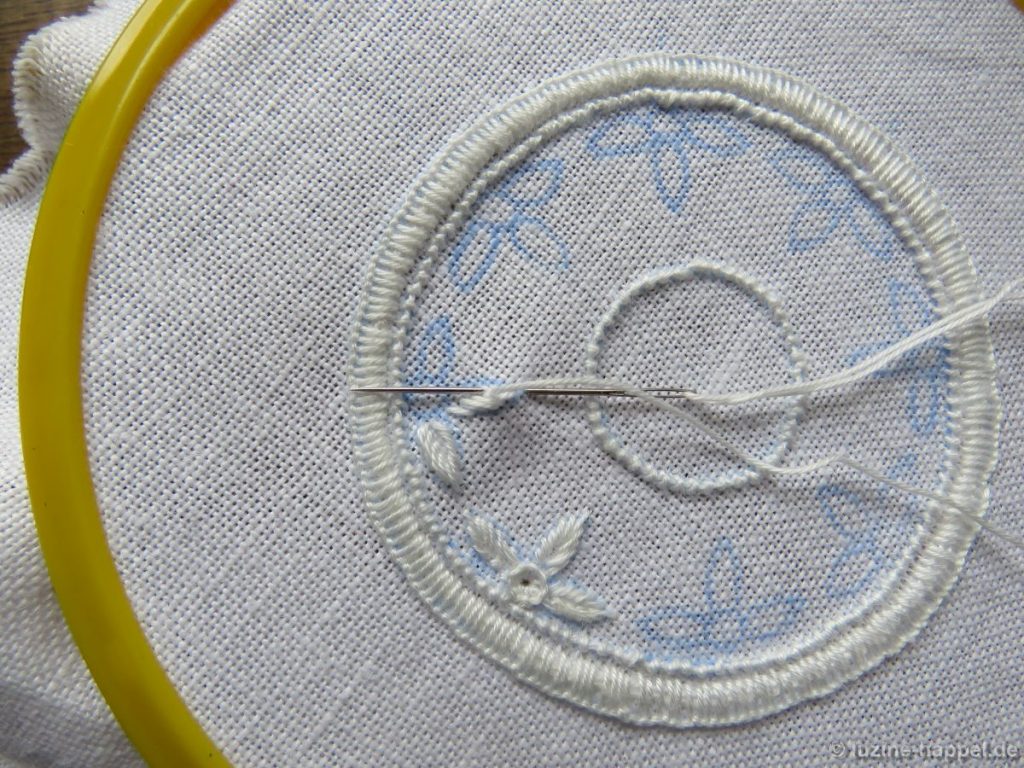 one after another.
one after another.
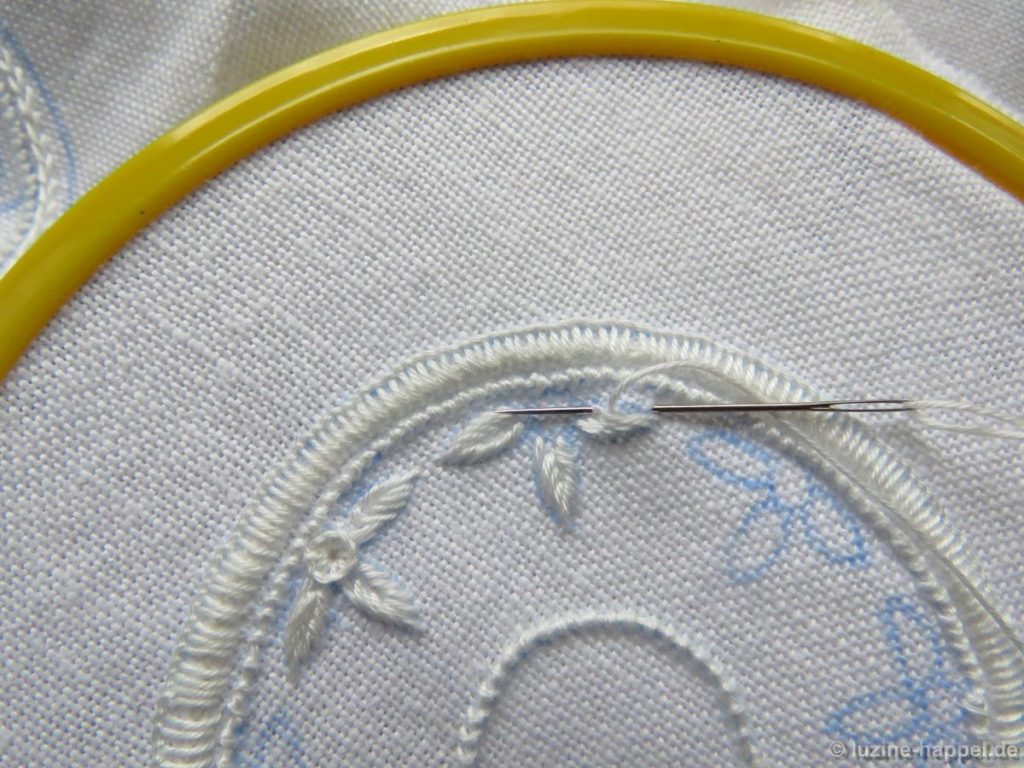 Then the Blanket stitch eyelet is worked.
Then the Blanket stitch eyelet is worked.
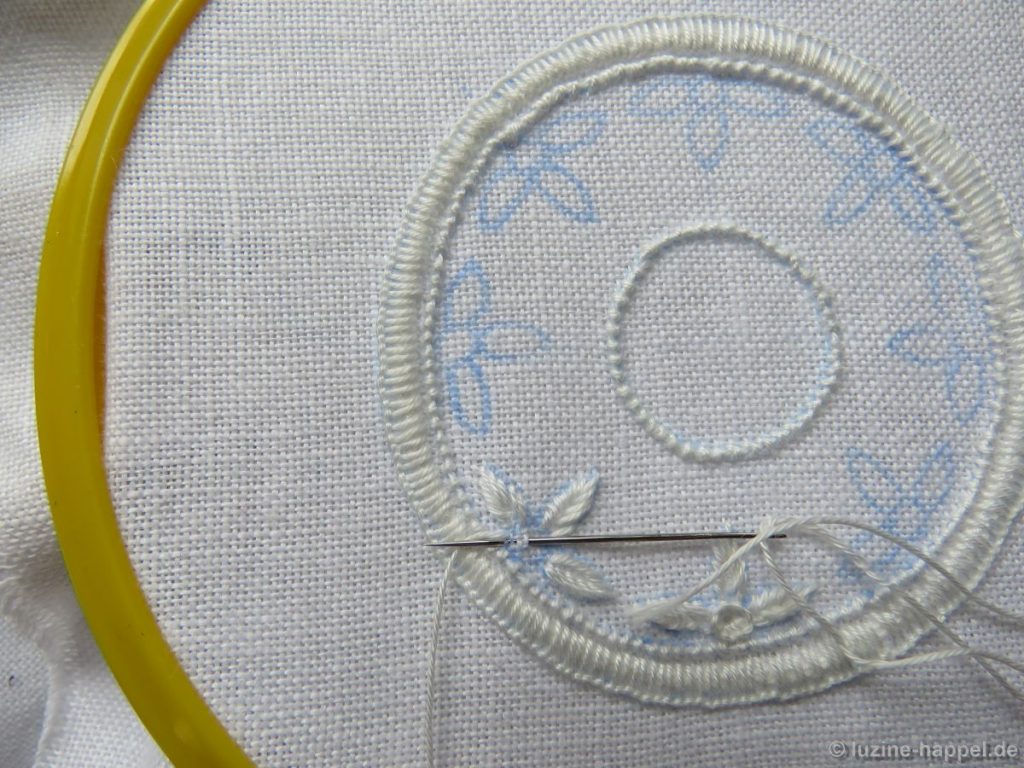 The embroidery is continued always working the leaves first and then the Blanket stitch eyelet.
The embroidery is continued always working the leaves first and then the Blanket stitch eyelet.
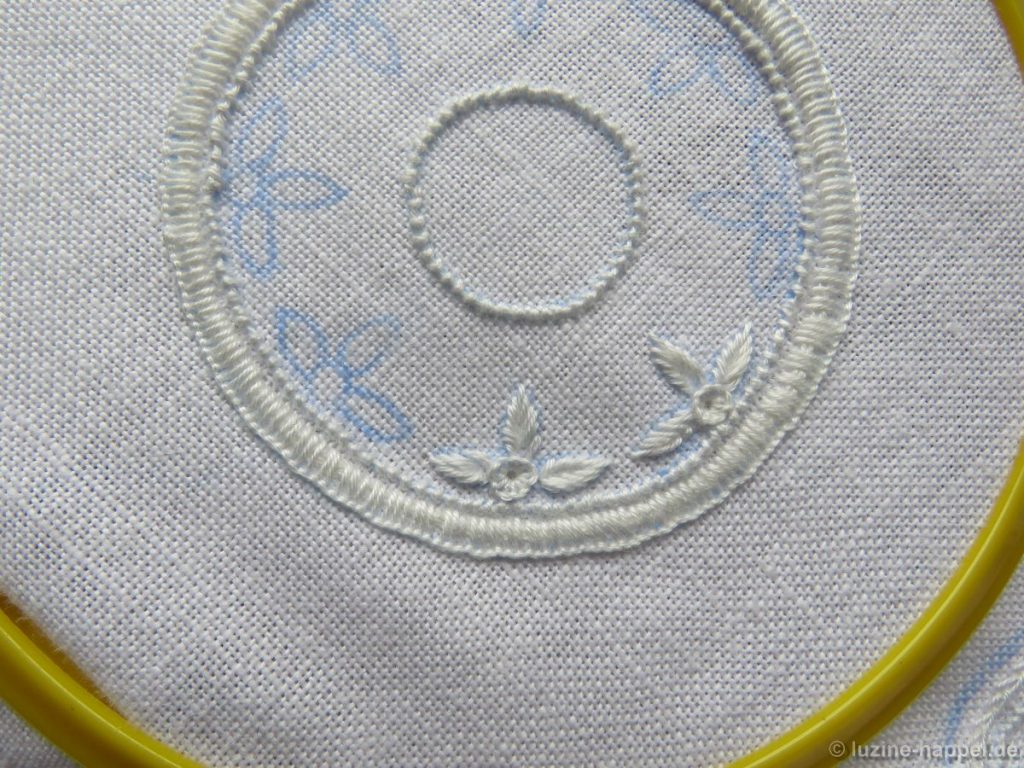 In the second design, the first step is to work Coral knots up from the edge to create the stems of the leaves and the Blanket stitch eyelets.
In the second design, the first step is to work Coral knots up from the edge to create the stems of the leaves and the Blanket stitch eyelets.
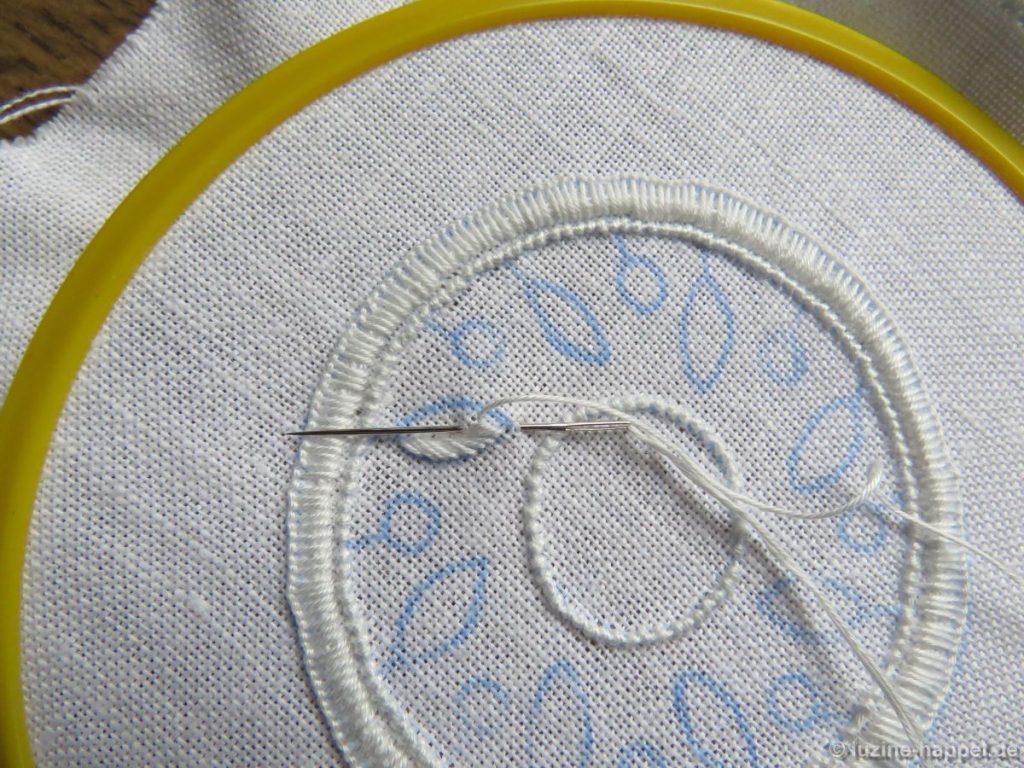 Then the leaves
Then the leaves
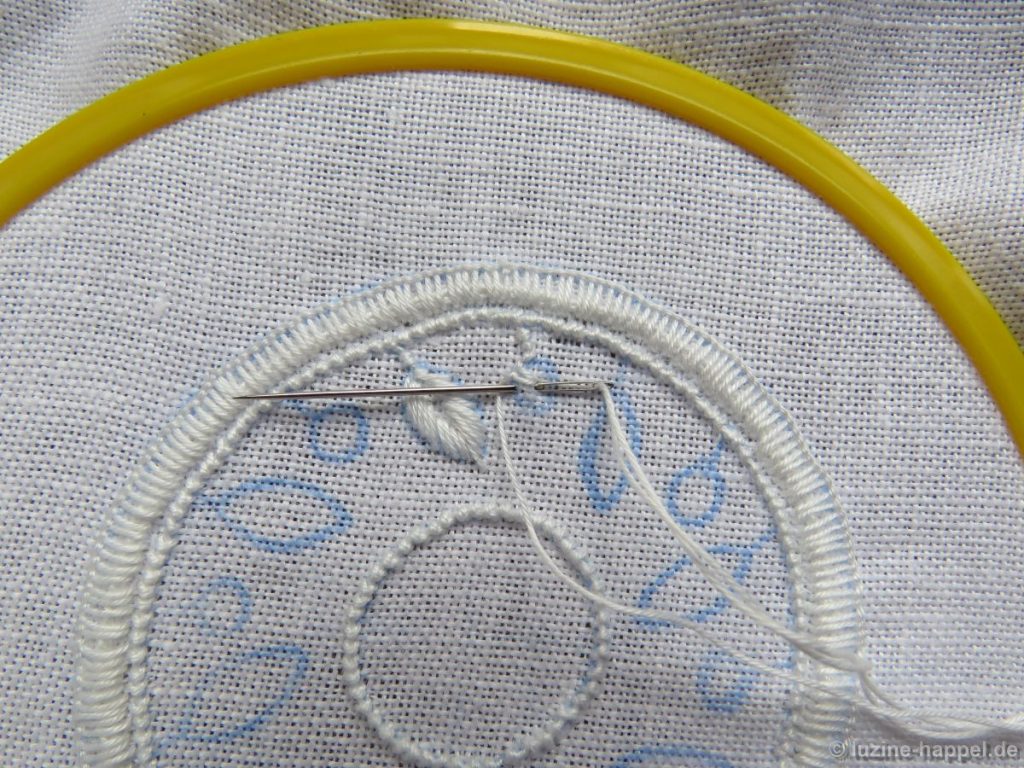 and the Blanket stitch eyelets are worked.
and the Blanket stitch eyelets are worked.
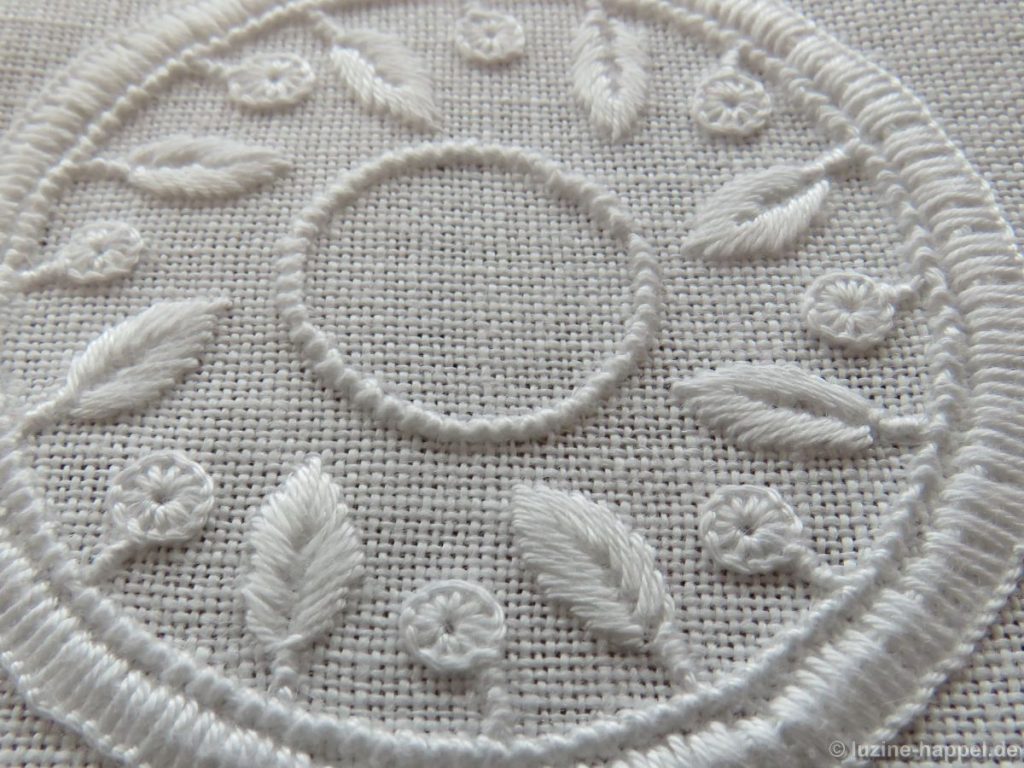 Both designs look pretty washed, starched, and ironed.
Both designs look pretty washed, starched, and ironed.

Buttons are not only functional but also decorative. In fact, often they are used as decoration only.
At my grandchildren´s house, I saw a kit for making fabric buttons, and I experienced the simplicity of making them.
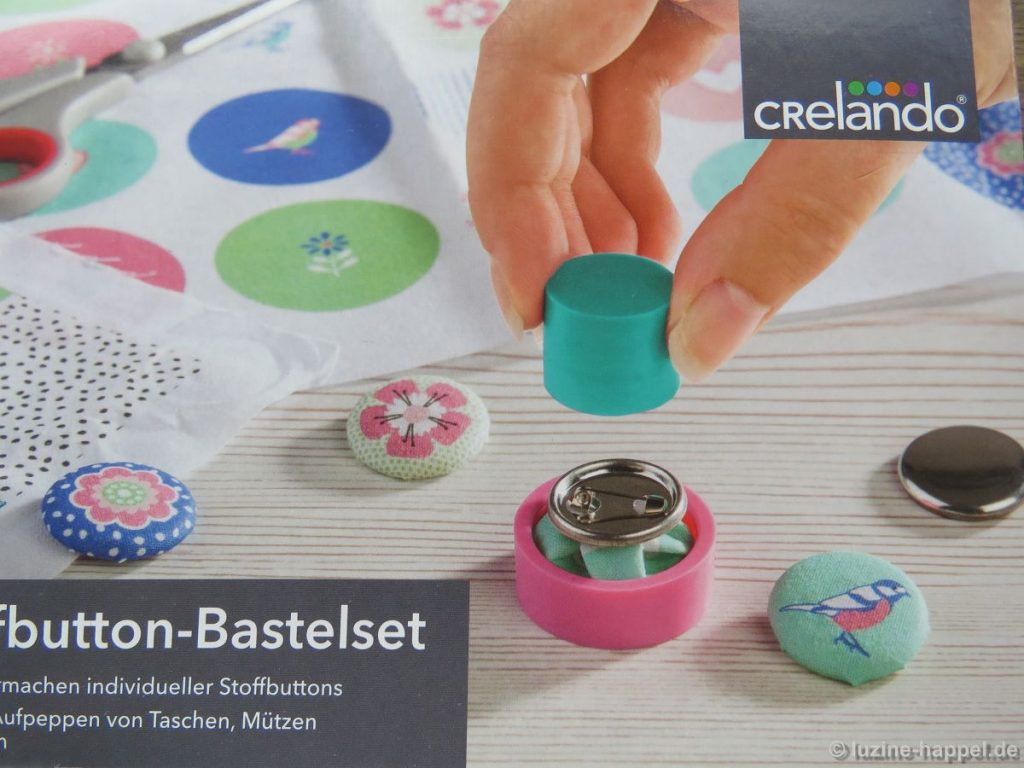 So I got the idea to work buttons with small elements of whitework. White and natural linen was embroidered with tendrils, small leaves, Blanket stitch eyelets, and small hearts. The pieces were cut, washed, starched, and ironed.
So I got the idea to work buttons with small elements of whitework. White and natural linen was embroidered with tendrils, small leaves, Blanket stitch eyelets, and small hearts. The pieces were cut, washed, starched, and ironed.
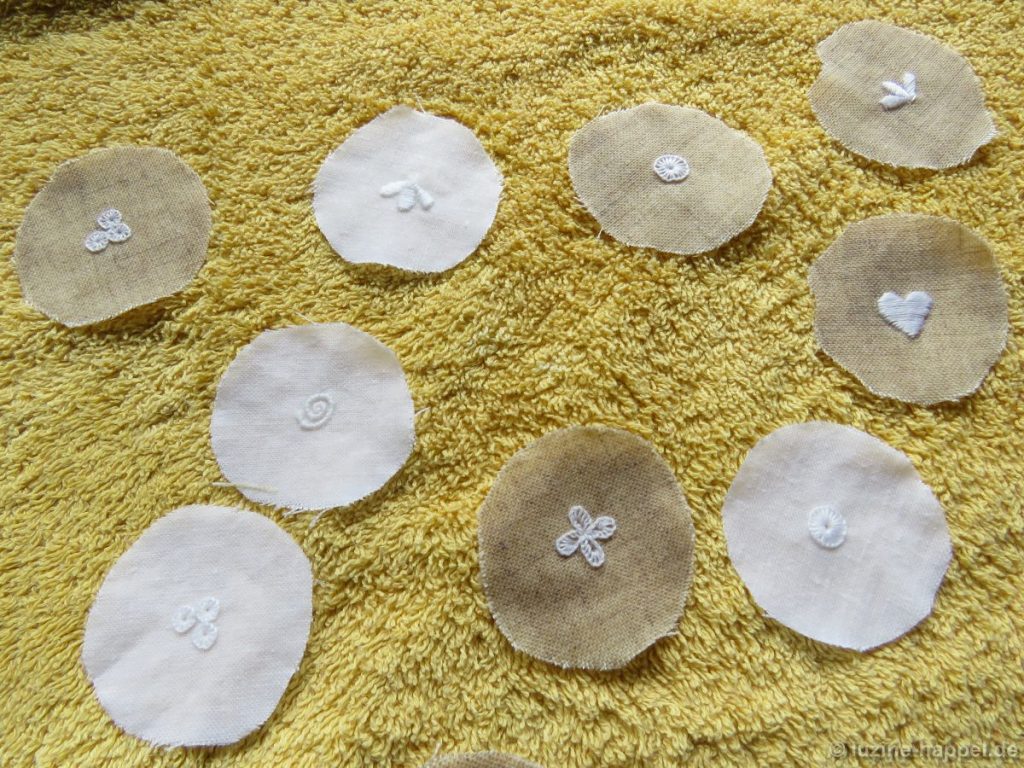 With the tools included in the kit, I tried to cover the button.
With the tools included in the kit, I tried to cover the button.
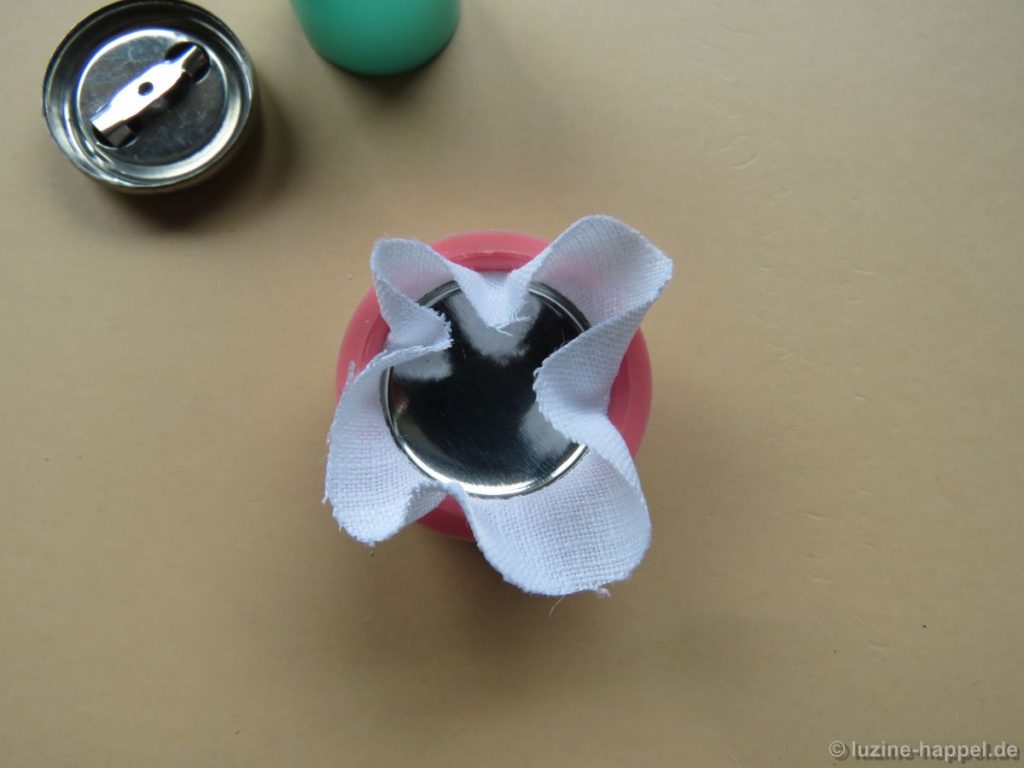 The linen was laid upside down over the button-making “bowl” and, using the top piece of the button form, pressed into the bowl.
The linen was laid upside down over the button-making “bowl” and, using the top piece of the button form, pressed into the bowl.
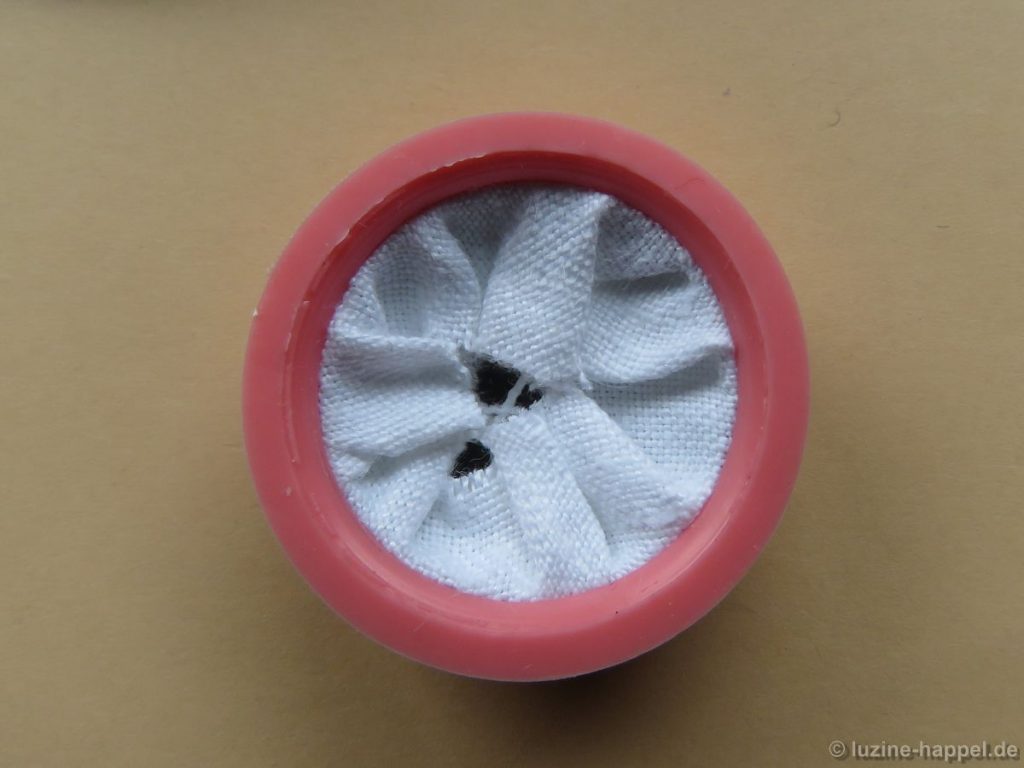 Remaining fabric was folded inwards.
Remaining fabric was folded inwards.
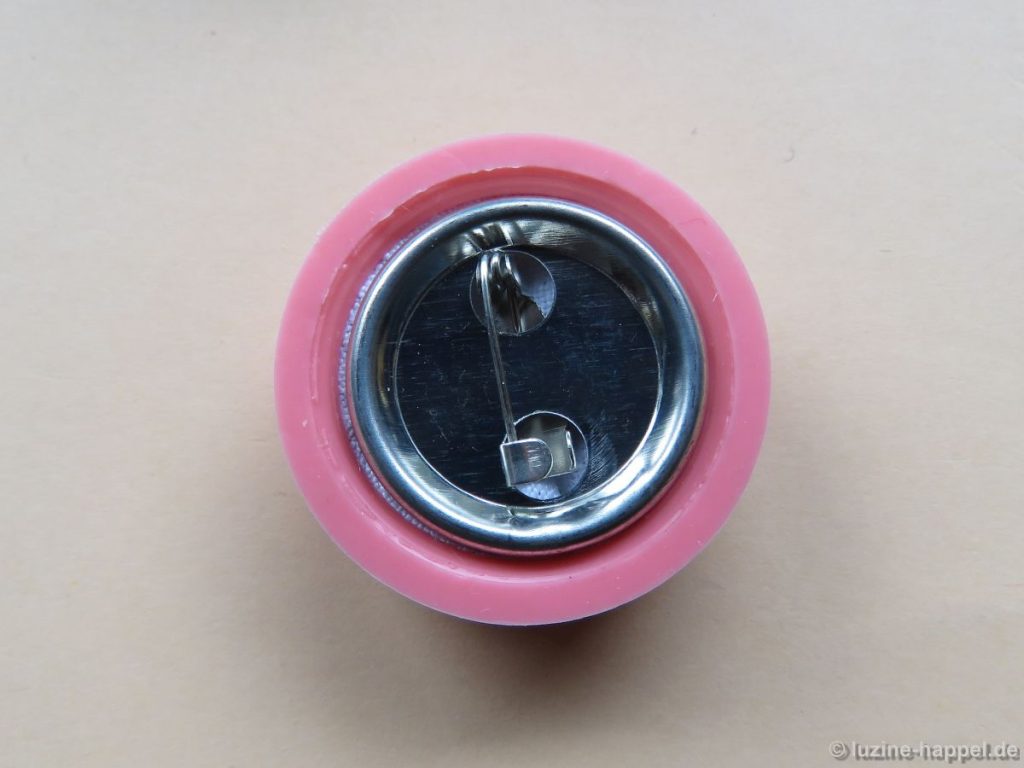 The back of the button form was positioned
The back of the button form was positioned
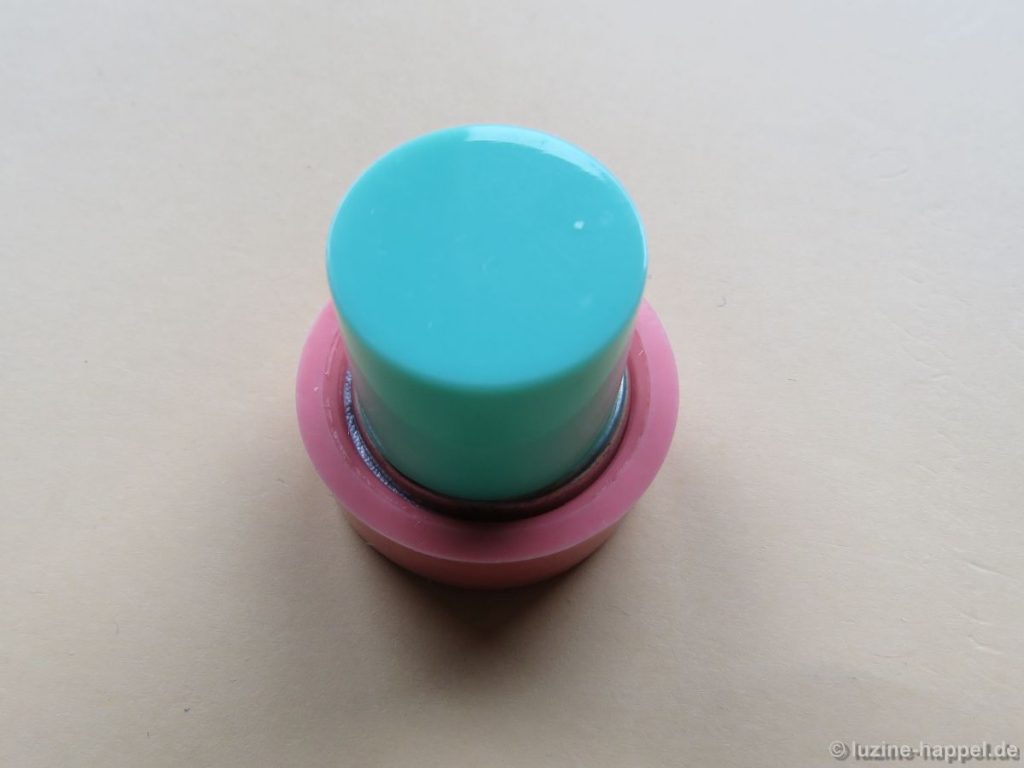 and, with the appropriate tool, pressed into the bowl.
and, with the appropriate tool, pressed into the bowl.
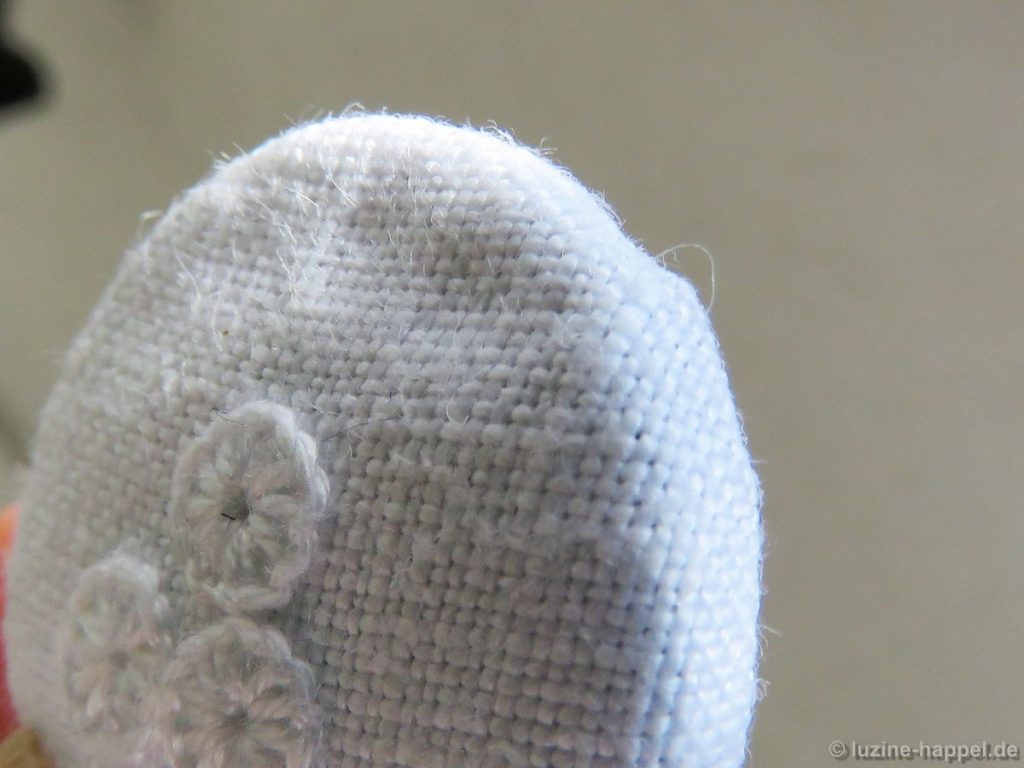 The result was sobering. One edge of the button was dented.
The result was sobering. One edge of the button was dented.
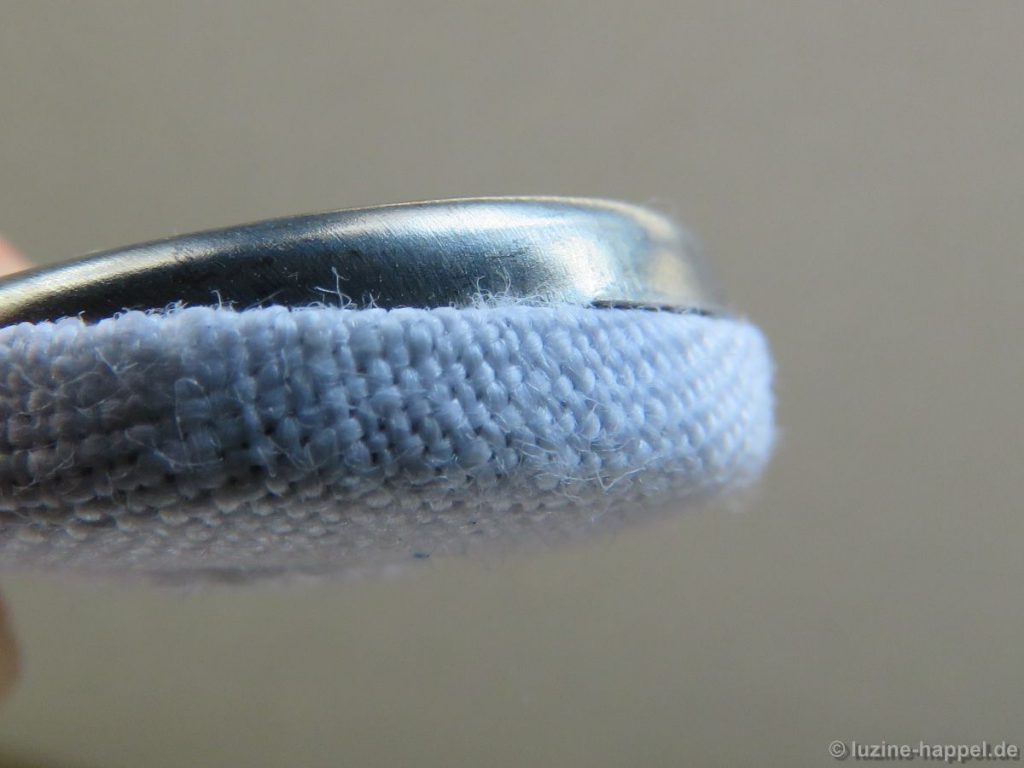 The back of the button form was not totally locked into place. The linen was thicker than the original fabric of the kit, so it did not work.
The back of the button form was not totally locked into place. The linen was thicker than the original fabric of the kit, so it did not work.
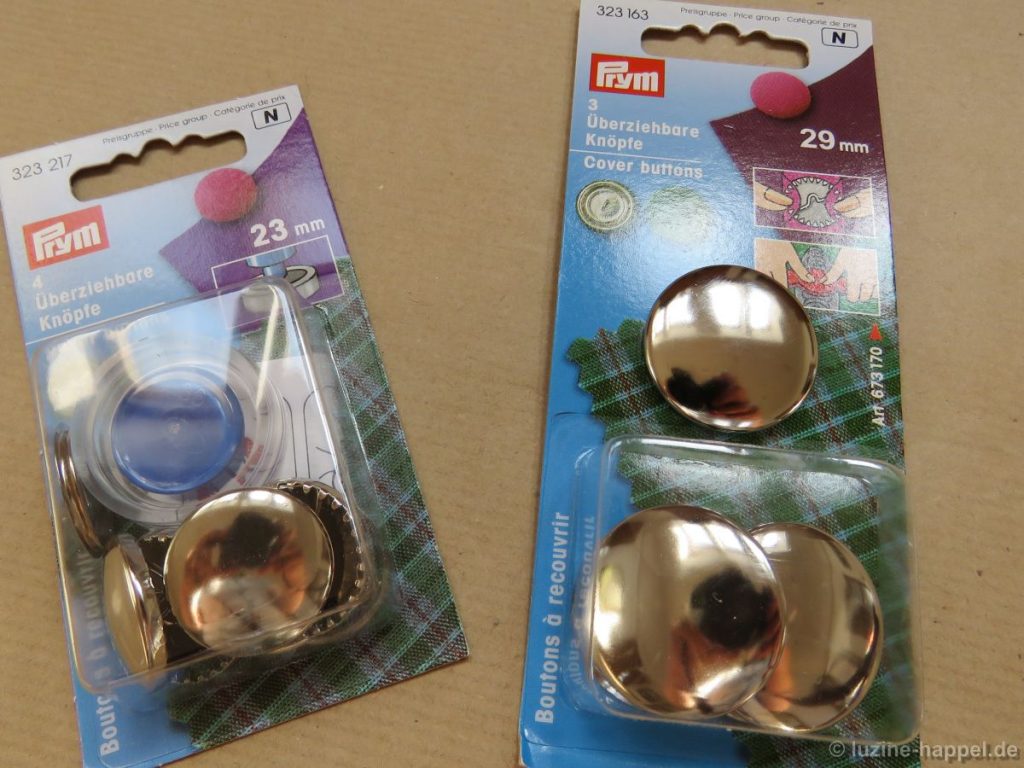 What to do now with all my embroidered linen pieces? I obtained high quality button blanks. They are available in different sizes.
What to do now with all my embroidered linen pieces? I obtained high quality button blanks. They are available in different sizes.
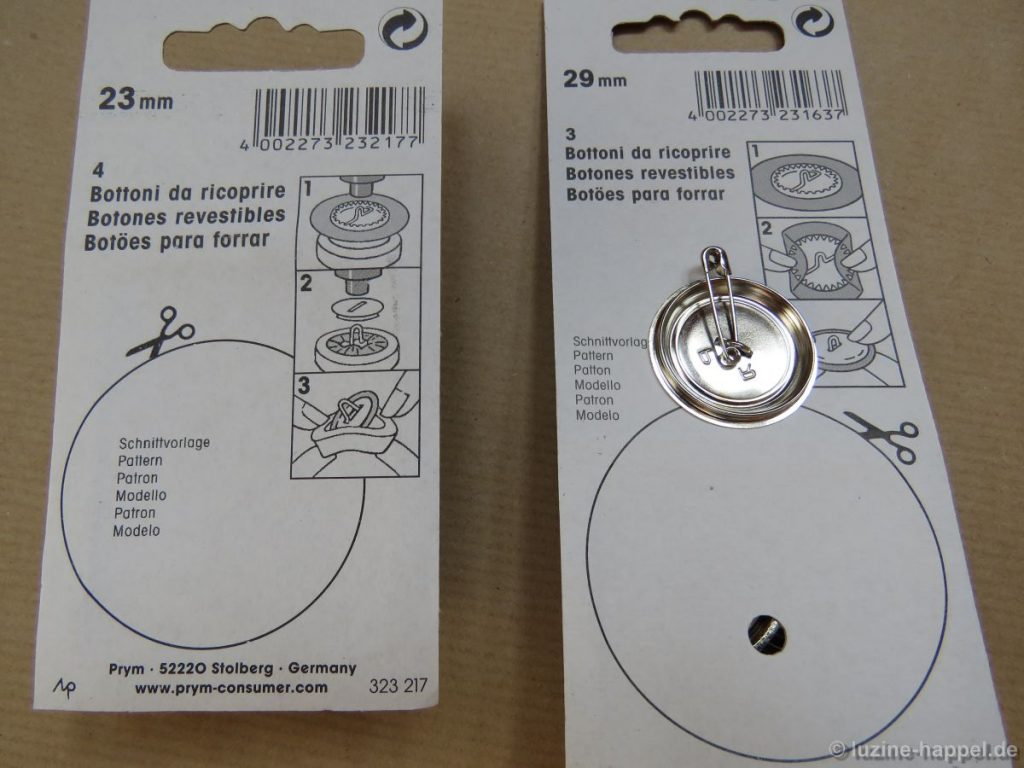 The packages of the smaller button blanks include the tools. Also these button blanks have the advantage that the finished buttons can be secured either by sewing or pinning with small safety pins. In addition, a stencil is included for cutting the fabric to the necessary size.
The packages of the smaller button blanks include the tools. Also these button blanks have the advantage that the finished buttons can be secured either by sewing or pinning with small safety pins. In addition, a stencil is included for cutting the fabric to the necessary size.
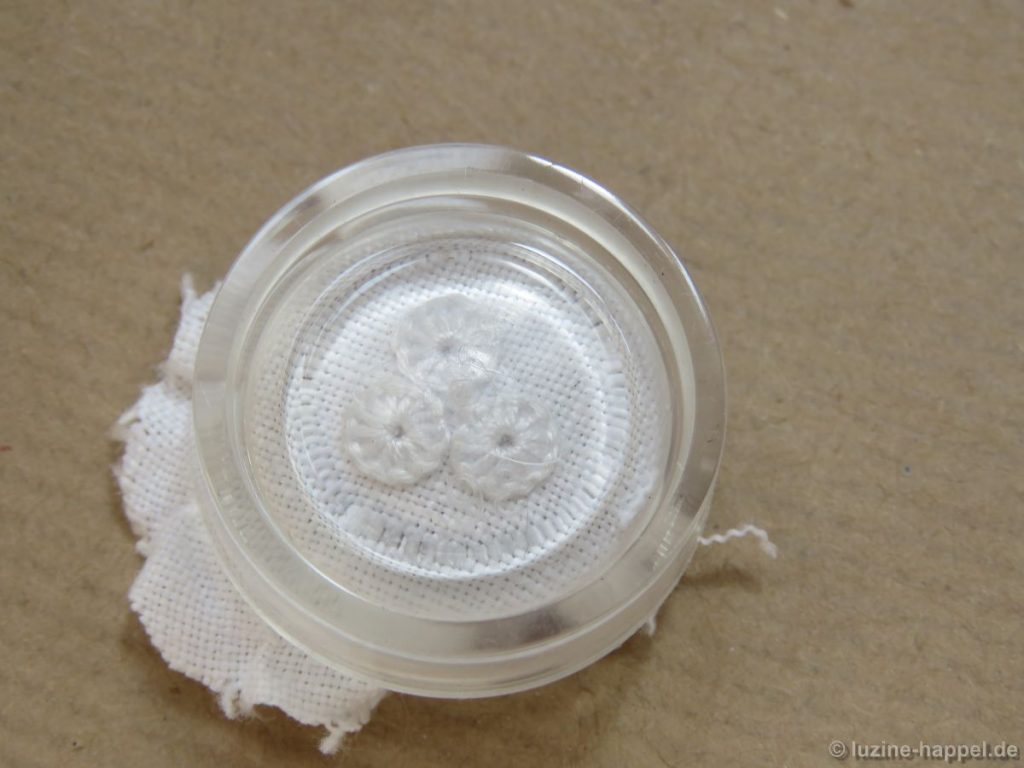 The button-making “bowl” is transparent; this helps in positioning the embroidery.
The button-making “bowl” is transparent; this helps in positioning the embroidery.
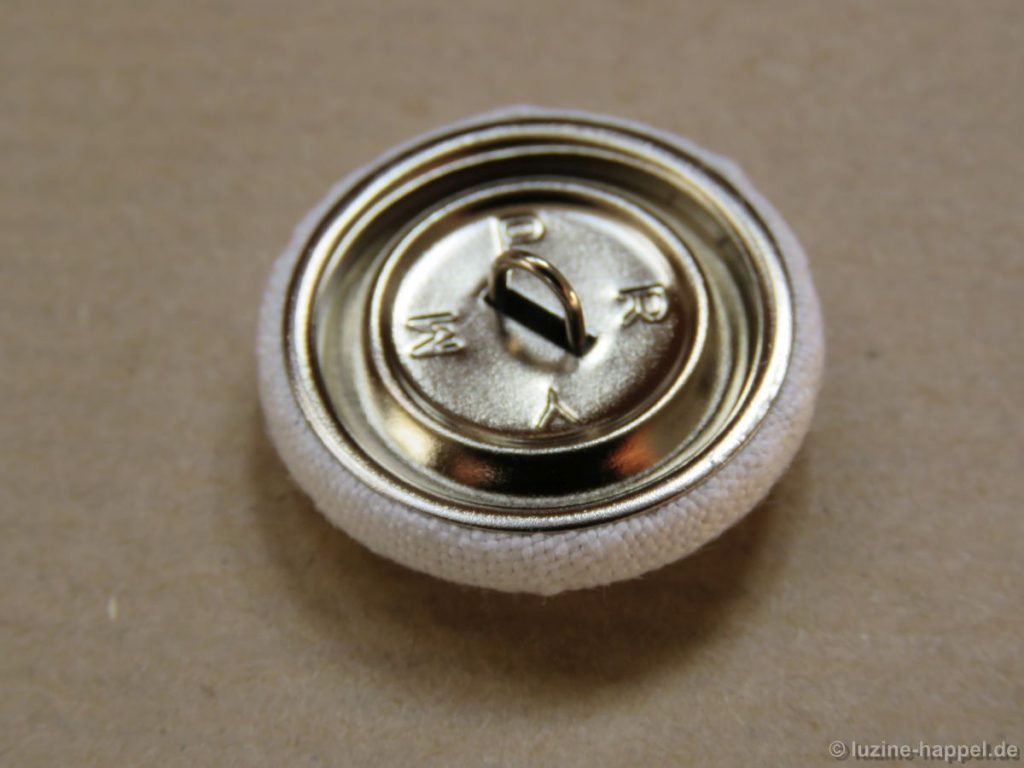 With the included pressing tool the back of the button form was easily.
With the included pressing tool the back of the button form was easily.
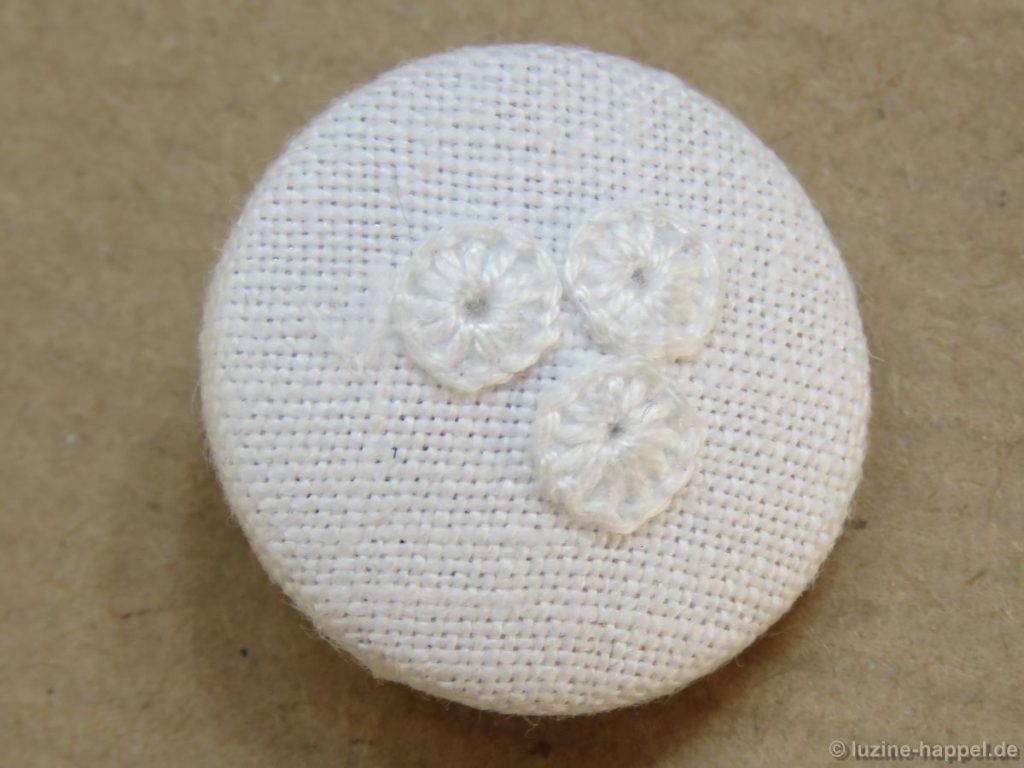 The first button was finished – evenly and smoothly covered.
The first button was finished – evenly and smoothly covered.
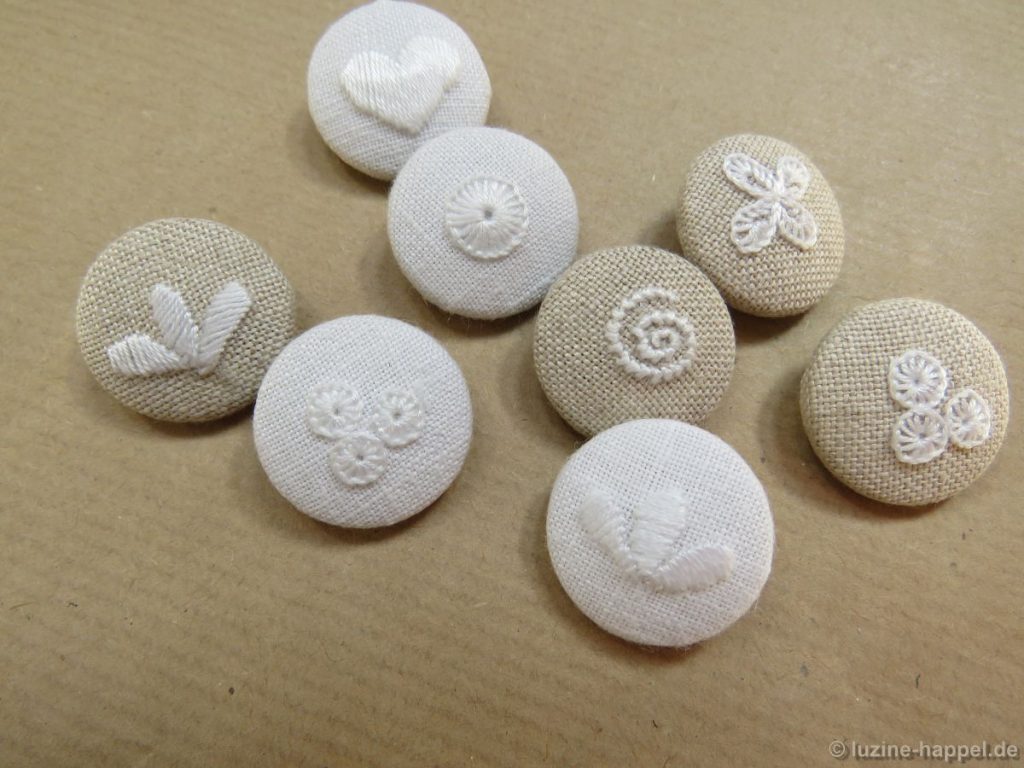 Now many embroidered buttons wait for their use on waistcoats, bags, sweaters, and . . . the possibilities are endless. Fitted with small safety pins, they are easily moved from one garment to another and removed before laundering.
Now many embroidered buttons wait for their use on waistcoats, bags, sweaters, and . . . the possibilities are endless. Fitted with small safety pins, they are easily moved from one garment to another and removed before laundering.
